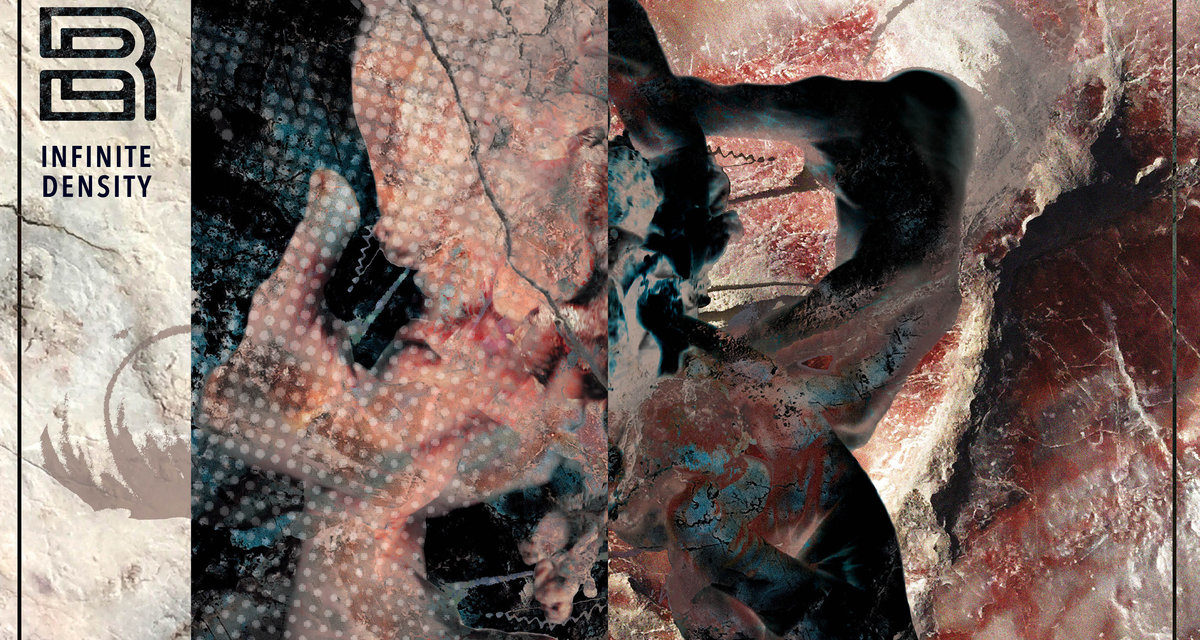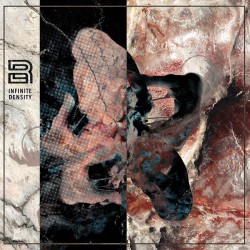Blush Response
Infinite Density
Sonic Groove
Joey Blush has found his niche; since abandoning the industrial rock trappings of Blush Response’s first releases in favour of techno abstraction the project has been rapidly evolving into newer and ever more intriguing forms. Following up on his rhythmic noise adjacent 2016 release for Ant-Zen, Blush’s new LP Infinite Density arrives via Adam X’s Sonic Groove label, and while it certainly shows some of the markers of the techno formalism he’s been dabbling in on his solo and collaborative releases for aufnahme + wiedergabe, there’s a distinctly sharp-edged andindustrial feel to the proceedings.
So much of where Blush Response is at musically is expressed through the way Blush approaches rhythm. Especially in the first half of the record, songs like the title track and “Panic Stricken” eschew standard 4/4 drum programming, instead relying on offbeat kicks, ticking cymbals and whirring sequences to carry the songs forwards. Even a track like “Survivor Guilt” that is almost entirely made up of echoing drones and slow-mo filter sweeps finds a groove in the occasional subbass thump and sculpted drum hit. When the album does break out into full-on dancefloor-ready material at roughly the halfway point, it’s via the clanging “Serpentine”, where boxy percussion loops are encircled by clipped and filtered acid squelches. “Infinite Dread” is body music at an anxious tempo that feels almost too fast for comfort, where the saturated kicks on “Tesselate” actually sound like they’re putting holes in the cresting waves of buzzing synth noise that border the song, threatening to shake the whole track to pieces.
Interestingly, for the first time since Blush stopped doing vocals on his own material, human voices play a major role in the tenor of the record. While never a spotlighted element (in fact it’s often difficult to tell what any of the various voices are saying), their value is in how they interact with the other aspects of Blush’s arrangements. The stretched and warped chanting that tumbles in midway through album highlight “Aum Shinrikyo” helps the song’s thin, sharp pads slice through the mix, and the reverberating shouts on “Tryptamine” act as a bit of punctuation as the song shifts gears up and down. As a sound designer Blush tends to favour analogue texture, which allows him some room to really get weird with vocal samples; note how he mixes a distinctive but incomprehensible bit of screaming into the metallic shapes that define “Painkiller”.
Infinite Density is an accomplished record from a technical standpoint, and that shouldn’t be a surprise at this point. With each release Blush Response has refined the production and programming, so that a healthy portion of the listening experience is about hearing what configurations and forms he can assemble with his toolset. Joey Blush isn’t showing any signs of settling down soon, and that makes each new release, including this one, an intriguing and rewarding listening experience.






